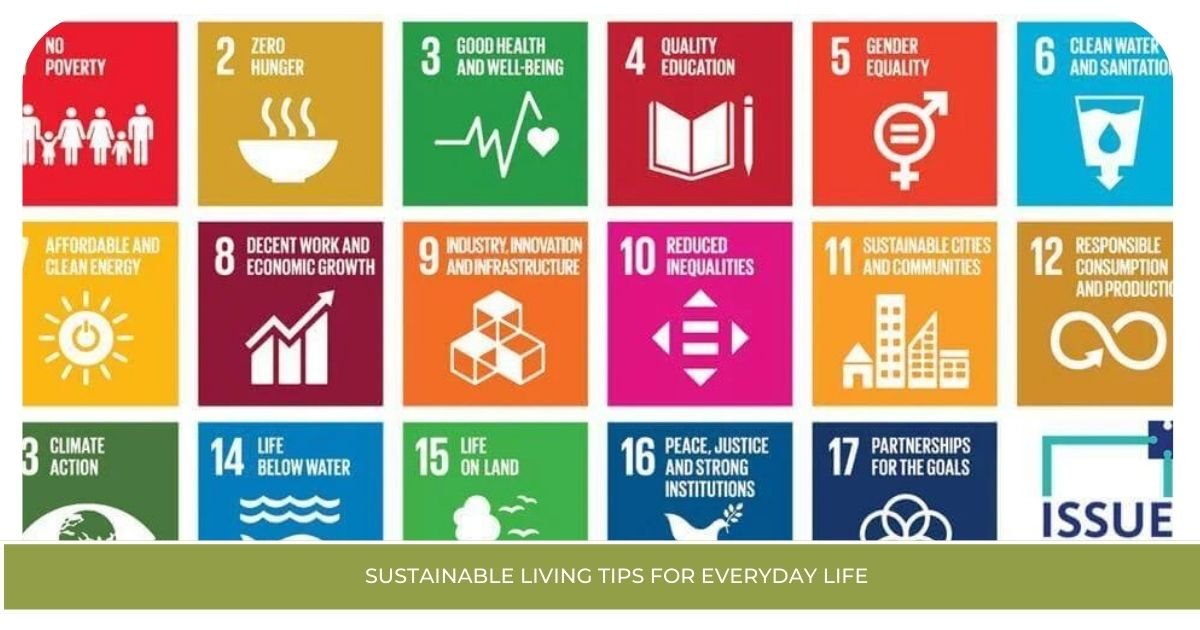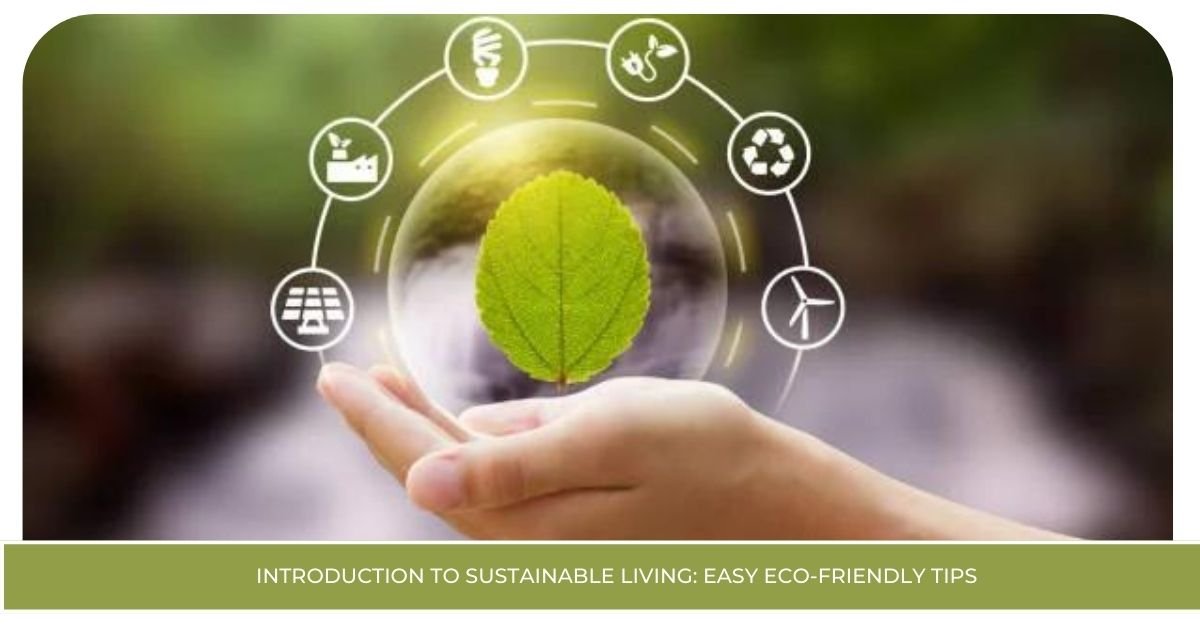Introduction to Sustainable Living: Steps Towards Eco-Friendliness
I. Introduction
What is Sustainable Living?
Sustainable living is a lifestyle that aims to reduce an individual’s or society’s use of natural resources. It involves making choices that minimize negative impacts on the environment, conserve natural resources, and promote a healthier planet. Sustainable living is about understanding the long-term effects of our actions and making conscious decisions to live in harmony with nature.
Importance of Adopting Sustainable Practices
Adopting sustainable practices is crucial for several reasons:
- Environmental Benefits: Reducing pollution, conserving resources, and protecting ecosystems.
- Health Benefits: Cleaner air, water, and food lead to better health and well-being.
- Economic Benefits: Saving money through energy efficiency and waste reduction, supporting local economies.

II. Getting Started with Sustainable Living
Assess Your Current Lifestyle
Before making any changes, assess your current lifestyle. Conduct a personal sustainability audit to identify areas where you can improve. Consider your energy consumption, water usage, waste production, and transportation habits. This will help you understand where you can make the most significant impact.
Setting Sustainable Goals
Set realistic and achievable goals. Start with short-term goals that are easy to implement, such as reducing water usage or switching to energy-efficient light bulbs. Gradually work towards long-term goals, like installing solar panels or adopting a zero-waste lifestyle. Having clear goals will keep you motivated and focused on your sustainable living journey.

III. Sustainable Living Tips for Everyday Life
Energy Conservation
- Switch to Renewable Energy Sources: Consider using solar, wind, or geothermal energy. These sources are renewable and have a lower environmental impact compared to fossil fuels.
- Reduce Electricity Consumption: Turn off lights when not in use, unplug electronics, and use energy-efficient appliances. Small changes can lead to significant energy savings.
- Energy-Efficient Appliances: Look for appliances with the ENERGY STAR label. These appliances use less energy and can save you money on your utility bills.
Water Conservation
- Save Water: Fix leaks, take shorter showers, and use a broom instead of a hose to clean driveways. Simple actions can save a lot of water.
- Water-Saving Devices: Install low-flow showerheads and faucets, dual-flush toilets, and efficient irrigation systems. These devices reduce water usage without compromising performance.
Waste Reduction
- The 3 Rs: Reduce, Reuse, Recycle: Reduce waste by buying less and choosing products with minimal packaging. Reuse items whenever possible and recycle materials like paper, plastic, and glass.
- Minimize Household Waste: Avoid single-use plastics, buy in bulk, and use reusable bags, bottles, and containers.
- Composting Basics: Start composting kitchen scraps and yard waste. Compost enriches the soil and reduces the amount of waste sent to landfills.
Sustainable Transportation
- Public Transport, Biking, and Walking: Use public transportation, bike, or walk instead of driving. These options reduce carbon emissions and improve your health.
- Electric and Hybrid Vehicles: Consider switching to an electric or hybrid vehicle. They are more fuel-efficient and produce fewer emissions than traditional cars.
- Carpooling and Ride-Sharing: Share rides with friends, family, or colleagues. Carpooling reduces the number of vehicles on the road, saving fuel and reducing pollution.
Eco-Friendly Food Choices
- Plant-Based Diet: Eating more plant-based foods and less meat reduces your carbon footprint. Plant-based diets require fewer resources to produce.
- Support Local and Organic Farmers: Buy locally grown and organic food. It’s fresher, supports local economies, and is often grown using more sustainable practices.
- Reduce Food Waste: Plan meals, store food properly, and use leftovers to minimize food waste.

IV. Sustainable Living in the Home
Eco-Friendly Home Improvements
- Sustainable Home Materials: Choose materials like bamboo, recycled wood, and eco-friendly insulation. These materials are more sustainable and often healthier for your home.
- Energy-Efficient Home Designs: Consider energy-efficient windows, insulation, and lighting. These improvements reduce energy consumption and lower utility bills.
- Green Home Certifications: Look for homes or improvements that have green certifications, such as LEED. These certifications ensure that the home meets high sustainability standards.
Sustainable Gardening Practices
- Grow Your Own Food: Planting a garden reduces the need for store-bought produce and ensures you know where your food comes from.
- Organic Gardening Tips: Use organic methods to grow your garden. Avoid chemical pesticides and fertilizers, use compost, and practice crop rotation.
- Create a Compost System: Composting kitchen and yard waste enriches your soil and reduces the amount of waste you produce.
V. Community and Global Impact
Engaging with Your Community
- Local Sustainability Initiatives: Get involved in local sustainability projects like community clean-ups or tree planting events. These initiatives foster a sense of community and contribute to a healthier environment.
- Community Gardens and Farmers’ Markets: Support community gardens and visit farmers’ markets. Theseprovide access to fresh, locally grown produce and support local farmers.
- Advocacy and Volunteering: Advocate for sustainable policies and volunteer with organizations focused on environmental conservation. Your efforts can lead to significant positive changes.
Global Perspective
- Global Sustainability Challenges: Understand the global challenges we face, such as climate change, deforestation, and plastic pollution. Awareness is the first step towards taking action.
- Fair Trade and Ethical Products: Support fair trade and ethically sourced products. These products are often produced with higher environmental and social standards.
- Reducing Carbon Footprint: Be mindful of your consumption habits. Choose products with lower carbon footprints, reduce travel, and offset carbon emissions when possible.
VI. Advanced Sustainable Living Practices
Zero Waste Lifestyle
- Principles of Zero Waste: Aim to send no waste to landfills. Focus on reducing, reusing, and recycling everything you use.
- Tips for Achieving Zero Waste: Start with small changes, like using reusable shopping bags and containers. Gradually move towards more significant changes, like making your cleaning and personal care products.
- Resources and Communities: Join zero waste communities for support and tips. Many online resources and local groups can help you on your zero waste journey.
Permaculture and Sustainable Agriculture
- Permaculture Principles: Learn about permaculture, a design system that mimics natural ecosystems. It focuses on sustainability, resilience, and self-sufficiency.
- Benefits of Sustainable Farming: Sustainable farming practices improve soil health, conserve water, and reduce reliance on chemical inputs.
- Implementing Permaculture in Small Spaces: Even if you have limited space, you can practice permaculture. Use container gardening, vertical gardens, and efficient water systems to create a sustainable mini-ecosystem.
VII. Overcoming Challenges in Sustainable Living
Common Obstacles and Solutions
- Addressing Misconceptions: Many people think sustainable living is expensive or inconvenient. However, many sustainable practices save money and are easy to implement.
- Solutions for Common Barriers: If cost is a concern, start with small, inexpensive changes. If knowledge is a barrier, use online resources, books, and local workshops to learn more.
- Maintaining Motivation: Stay motivated by setting clear goals, tracking your progress, and celebrating small victories. Surround yourself with like-minded individuals who support your efforts.
VIII. Conclusion
Recap of Key Points
Sustainable living is about making conscious choices to reduce your environmental impact. From conserving energy and water to reducing waste and choosing sustainable transportation, every small step counts. Implementing eco-friendly home improvements, engaging with your community, and understanding global sustainability challenges are essential parts of this journey. Advanced practices like zero waste living and permaculture can further enhance your sustainable lifestyle.
FAQs on Sustainable Living
What are the 7 Rs of sustainable living?
The 7 Rs of sustainable living are Refuse, Reduce, Reuse, Repair, Recycle, Rot, and Rethink. These principles guide individuals in minimizing waste, conserving resources, and making environmentally friendly choices in daily life.
How do you live sustainably?
Living sustainably involves making conscious choices to reduce your environmental impact. This includes conserving energy and water, reducing waste, using eco-friendly products, supporting local and organic food, and choosing sustainable transportation methods like biking or public transit.
Which option is an example of sustainable living?
An example of sustainable living is using renewable energy sources, such as solar or wind power, to reduce dependence on fossil fuels. This practice minimizes carbon emissions and helps conserve natural resources.
What is sustainable living in biology?
In biology, sustainable living refers to practices that support the long-term health of ecosystems. This includes maintaining biodiversity, reducing pollution, and managing natural resources responsibly to ensure that they remain available for future generations.
What is meant by sustainable living?
Sustainable living means adopting a lifestyle that reduces one’s environmental impact by making choices that support ecological balance and resource conservation. This involves using fewer resources, minimizing waste, and taking actions that promote the health of the planet and future generations.
